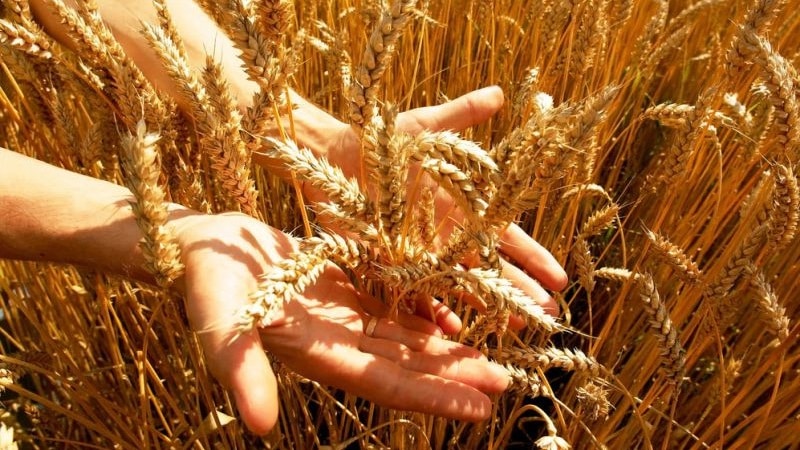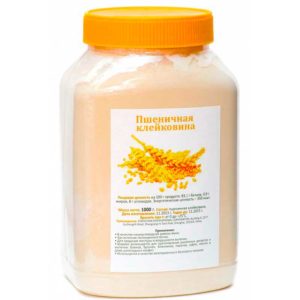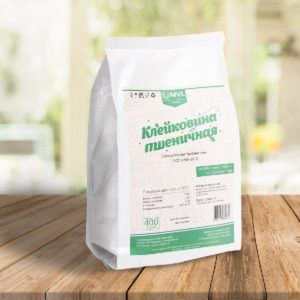What is wheat gluten, how is it determined and what does it affect?
Gluten, or gluten, is a complex protein substance that is insoluble in water. In addition to wheat, it is found in barley, oats, rye and all products derived from these cereals. The level of gluten is one of the most important indicators of the quality of a grain crop, since the properties of flour depend on it.
What is wheat gluten
Gluten (from the Latin gluten - “glue”) is a group of proteins similar in structure and properties that are found in the grains of cereal plants. In the scientific community, this term mainly refers to the proteins prolamins and glutelins. Their content is up to 85% of the total protein composition. The substance is colored yellowish or yellowish-gray.
Reference. Gluten was first discovered back in 1728 by the Italian thinker and publicist, chemist Bartolomeo Jacopo Beccari.
Gluten is located in the form of dry particles in the endosperm of cereals between starch grains. As the dough is soaked and kneaded, the gluten particles swell and stick together, forming a specific protein phase that wraps around the starch grains like a net. The result is a cohesive dough - elastic, compact, soft.
During yeast fermentation, the mass loosens, but does not collapse precisely due to the elasticity of the swollen gluten. The resulting porous structure, after the mass is exposed to high temperatures, is fixed.

What is the significance of this indicator?
Gluten is an essential element in human nutrition. It improves digestion by binding nutrients and minerals.
The higher the gluten level in flour, the better baking qualities it has. The physical properties of baked goods and dough directly depend on the quality and quantity of gluten in flour.
IDK wheat gluten
IDK is a gluten deformation meter. The quality of products made from flour depends on it.
The IDK apparatus measures the gluten deformation index: starch grains and other water-soluble elements are removed to obtain the wet weight of the substance, the mass fraction of which in the sample is about 98%.
What does the level depend on?
The percentage of gluten content in wheat grain is determined by several factors, which are divided into 3 groups:
- genetic, or varietal;
- environmental - depend on the conditions of plant cultivation;
- external, or exogenous, depend on the collection and processing of grain.
Indicator by wheat class

First 3 classes wheat have the best gluten levels. They are used in the flour-grinding and baking industries, combined into group A. The gluten content ranges from 28–58%.
Group B includes grades 4 and 5, who go to prepare cereals and pasta. Their gluten levels are lower and amount to about 25%, so flour from these varieties is mixed with flour richer in gluten.
The sixth class is of the forage type and contains a minimal amount of gluten - less than 20%.
Dry gluten
In food factories and bakery production, dry gluten is used to improve the quality of flour. It is used to prepare pasta and confectionery, frozen semi-finished products, bread, and baked goods.

Important! The largest amount of gluten is found in wheat and products made from wheat flour.
In addition, dry gluten is added to meat products to improve the setting of minced meat.
How is the quantity and quality of gluten determined?
Determination of the quality of gluten in grain is carried out using its resistance to compression and elongation. It should not be overly soft or too brittle.
Elasticity indicators are recorded in GOST. The essence of the method is to isolate raw gluten from dough obtained by mixing ground grain and water.
Sequencing
The resulting product is soaked in water to remove starch and produce a sticky mass. To do this, a ball weighing 4 g is separated from a single piece and placed in water at a temperature of +16...+20°C for 15 minutes. As a result, intermolecular bonds are formed inside and water-soluble substances, including bran and starch, are removed.
The resulting ball is immersed on the platform of the apparatus under a special press. Pressing occurs for a certain time depending on the device used, after which the result is reflected.
Analysis of the result
The best indicators are considered to be 45-75 and 80-100 units - these are the first and second groups of IDK. Third - 105-120 units - unsatisfactory-weak indicators.
There are 2 unsatisfactory out-of-group results - from 0 to 15 units and from 20 to 40 units. This gluten has a dark color and is formed when the technology for growing and storing grain is violated.
This is interesting:
Be careful, gluten: is it in buckwheat, oatmeal, millet?
Content standards
Each type of flour has certain standards for raw gluten content established by GOST.
Wallpaper flour should contain about 20% of the substance, second-grade flour - 25%. First-grade flour and semolina contain an average of 30% gluten, premium flour - 28%.
How does it affect product quality?
The optimal indicator for bakery products is 53–77 IDC units. The products obtained from such flour have the correct structure, good volume and taste.
Flour with a small amount of gluten does not provide the necessary volume and elasticity to the dough. As a result, the products are flat, blurry, and there is almost no porosity. However, this does not make it useless: such flour is used in the preparation of confectionery products.
Products made from flour with strong gluten have rough porosity, crumble, and have no volume. This product is used in the production of lamb products, due to which they are brittle and dense, crumble well, and have coarse porosity.
Protein Ratio
Indicators of the mass fraction of raw gluten and protein are interrelated. The higher the protein content in wheat grains, the more dry particles it contains, which, upon contact with water, will form certain amino acid and intermolecular bonds with each other.
Reference. This ratio directly depends on the weather conditions of the year in which it grows. wheat. The highest relationship between the indicators is recorded in early-ripening and mid-early varieties. Among the mid-late-late, the connection is somewhat lower.
However, not only the quantity, but also the quality of gluten is important, which depends on the factors of wheat growth, the characteristics of the variety, the subsequent harvesting and processing of grain by chemical and thermal methods.
Conclusion
Gluten is the most important factor in the baking quality of wheat flour. Therefore, the efforts of breeders for many years were aimed at studying the properties of gluten, the factors of its formation and obtaining varieties with a high content of the substance. It determines the properties of the future dough and the production direction of the flour. The structure of bakery and pasta products depends on its composition and quality.